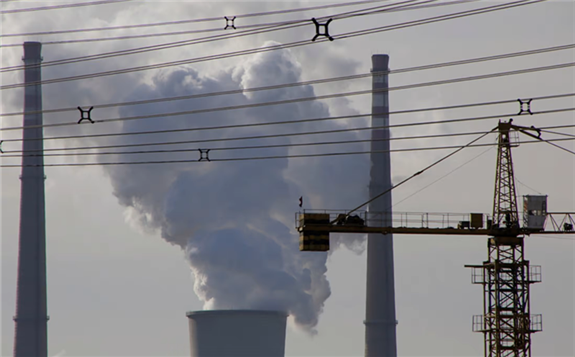China’s carbon trading market will see further expansion and an increase in prices in 2022, analysts predicted.

However, the scheme, which has just concluded its first compliance period, could still do with some tweaks to navigate clouds on the horizon, they said.The carbon price in the national emissions trading scheme (ETS) could reach 65 yuan (US$10.19) per tonne in 2022, compared to 54.22 yuan per tonne at the end of 2021, according to one forecast. Trading volumes will further increase as China welcomes more participants into the market, climate experts believe.The first compliance period of the ETS ended on December 31, a few months after the official launch of online trading in July last year.The compliance rate was 99.5 per cent, meaning that virtually all of the 2,162 power sector enterprises participating in the scheme held carbon allowances that were at least equal to their actual emissions in 2019 and 2020.A total of 179 million tonnes of carbon allowances changed hands during the 114 trading days of 2021, according to the Ministry of Ecology and Environment. The price of the carbon emission allowance (CEA), which companies can buy or trade under the scheme, settled at 54.22 yuan per tonne on the last trading session on December 31, up 13 per cent from the first trading day on July 16.
“The very high compliance rate in the first compliance period beat expectations, and the price of CEA was in line with our projections,” said Yuan Lin, lead China analyst at Refinitiv. “The national ETS will make enterprises more aware of carbon costs and conscious of reducing emissions, helping China to achieve its carbon peak and neutrality pledge.”Data provider Refinitiv predicts the carbon price in the national ETS will rise further in the coming year, reaching 65 yuan per tonne as regulators tighten the scheme’s rules.As the ETS broadens its scope to cover more sectors and develops its carbon trading infrastructure and capabilities, China’s national carbon market will move into a phase of expansion and capacity building in 2022, investment bank UBS said in a report this month.
Currently, the scheme covers only polluters from the power sector, which account for 40 per cent of the country’s total emissions. The ETS is planning to add new participants, including financial institutions and emitters from the non-ferrous metals and building materials sectors in 2022.
It also plans to launch carbon-related derivative products including swaps, forwards and options to help build China into a global centre for carbon trading and pricing.It could help carbon trading in China evolve into an alternative investment with a market size of 500 billion yuan and the carbon price exceeding 200 yuan per tonne in the next few years given stronger demand and tighter supply, according to UBS.In its bull case, UBS estimated the market size in China could eventually reach 2 trillion yuan, bringing potential commission fees of hundreds of millions of yuan to trading exchanges and market makers.
“Furthermore, new carbon financial products could evolve with ample market sizes, bringing new business to Chinese financial institutions,” UBS wrote in the report.However, the ETS still faces several shortcomings, which could impede the carbon market’s development in 2022.
“Overall, the current national carbon market is a market supported by compliance requirements. It still has many problems to overcome,” Lai Xiaoming, chairman of the Shanghai Environment and Energy Exchange, told Chinese media.The transaction volume is expected to drop significantly in January compared to the vibrant scene in December when polluters rushed to hit their compliance targets, Lai predicted.
The liquidity of the market needs to be improved. Although China’s ETS covers more than twice the total carbon emissions of its European counterpart, its trading volume and sums are only 5 per cent and 1.3 per cent of the latter, respectively, according to Rao Shuling, a senior researcher at the Beijing Institute of Green Finance and Sustainable Development.“We expect the ETS regulators to take measures to enhance market liquidity, such as allowing non-compliance entities into trading including financial investors, and potentially expand carbon trading products to enable more efficient carbon price discovery,” Yuan recently told the Post.
The benchmark-based element of the scheme may also need fine-tuning. China’s national ETS uses carbon-intensity benchmarks rather than the absolute emissions caps used by the European ETS to distribute carbon allowances. Analysts worry that this could limit its impact on carbon reduction.“China’s carbon trading programme, by its design, isn’t really capping emissions and showing reductions,” Roman Kramarchuk, head of future energy analytics at S&P Global Platts, said in a report this month.